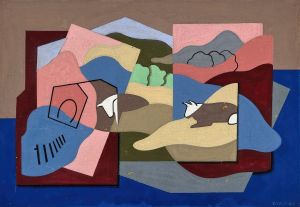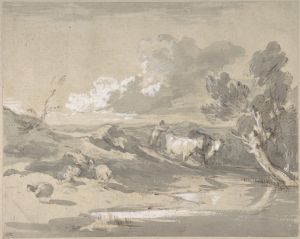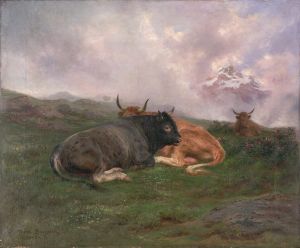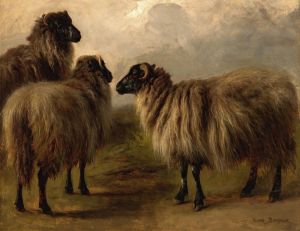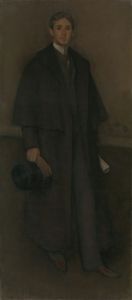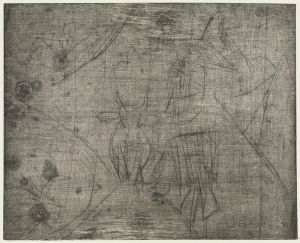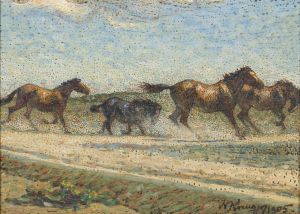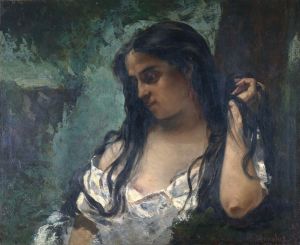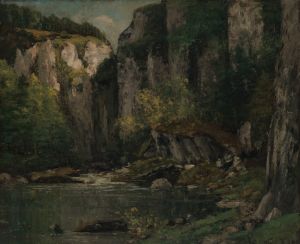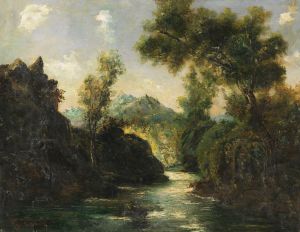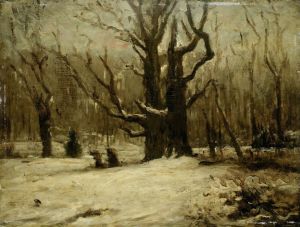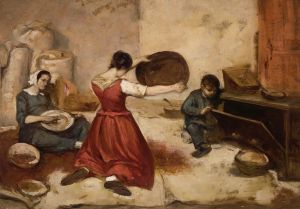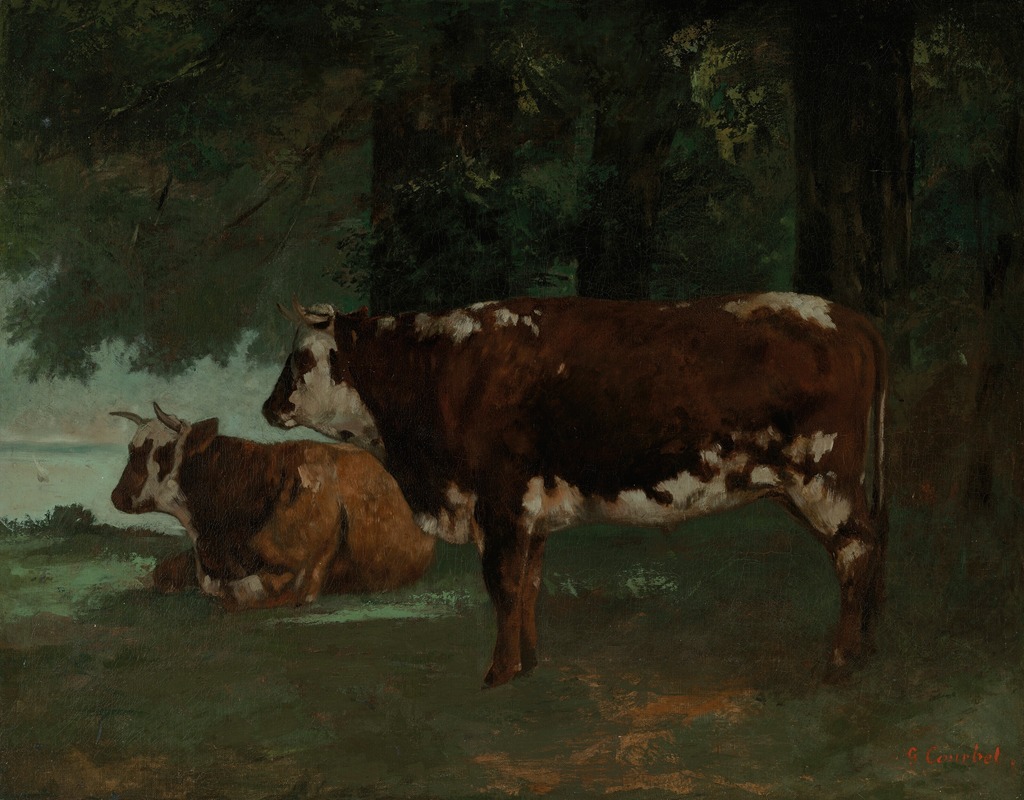
Deux vaches a la robe marron
A hand-painted replica of Gustave Courbet’s masterpiece Deux vaches a la robe marron, meticulously crafted by professional artists to capture the true essence of the original. Each piece is created with museum-quality canvas and rare mineral pigments, carefully painted by experienced artists with delicate brushstrokes and rich, layered colors to perfectly recreate the texture of the original artwork. Unlike machine-printed reproductions, this hand-painted version brings the painting to life, infused with the artist’s emotions and skill in every stroke. Whether for personal collection or home decoration, it instantly elevates the artistic atmosphere of any space.
Gustave Courbet, a pivotal figure in the 19th-century French art scene, is renowned for his role in the Realism movement, which sought to depict subjects as they were, without idealization. One of his works, "Deux vaches à la robe marron" (Two Cows with Brown Coats), exemplifies his commitment to portraying everyday life and nature with authenticity and attention to detail.
Courbet was born in 1819 in Ornans, a small town in the Franche-Comté region of France. His upbringing in this rural environment profoundly influenced his artistic vision, as he often drew inspiration from the landscapes and rural life surrounding him. This connection to nature and rural subjects is evident in "Deux vaches à la robe marron," where he captures the essence of pastoral life.
The painting depicts two cows with brown coats, likely set against a rural backdrop, though specific details about the background are not widely documented. Courbet's technique in this piece, as in many of his works, reflects his mastery of texture and light, bringing a sense of realism and vitality to the animals. His brushwork and use of color would have been employed to convey the physicality and presence of the cows, emphasizing their natural beauty and the simplicity of rural life.
Courbet's Realism was a reaction against the dominant Romantic and Neoclassical styles of his time, which often idealized subjects and relied on dramatic, sometimes fantastical elements. Instead, Courbet focused on the tangible and the real, choosing subjects that were part of everyday life. This approach was both revolutionary and controversial, as it challenged the established norms of the art world and the expectations of art patrons and critics.
"Deux vaches à la robe marron" fits within this context as a representation of Courbet's dedication to depicting the world as he saw it. His choice to paint cows, a common and unglamorous subject, underscores his belief in the importance of all aspects of life as worthy of artistic exploration. This painting, like many of Courbet's works, would have been intended to provoke thought and encourage viewers to appreciate the beauty in the ordinary.
Courbet's influence extended beyond his own works, as he inspired future generations of artists to embrace realism and explore new subjects and techniques. His commitment to realism laid the groundwork for later movements, such as Impressionism, which also sought to capture the world in new and innovative ways.
While specific details about the provenance and current location of "Deux vaches à la robe marron" are not extensively documented, the painting remains an important part of Courbet's oeuvre, reflecting his artistic philosophy and his connection to the natural world. Through works like this, Courbet not only depicted the world around him but also challenged viewers to see the inherent value and beauty in everyday scenes and subjects.





